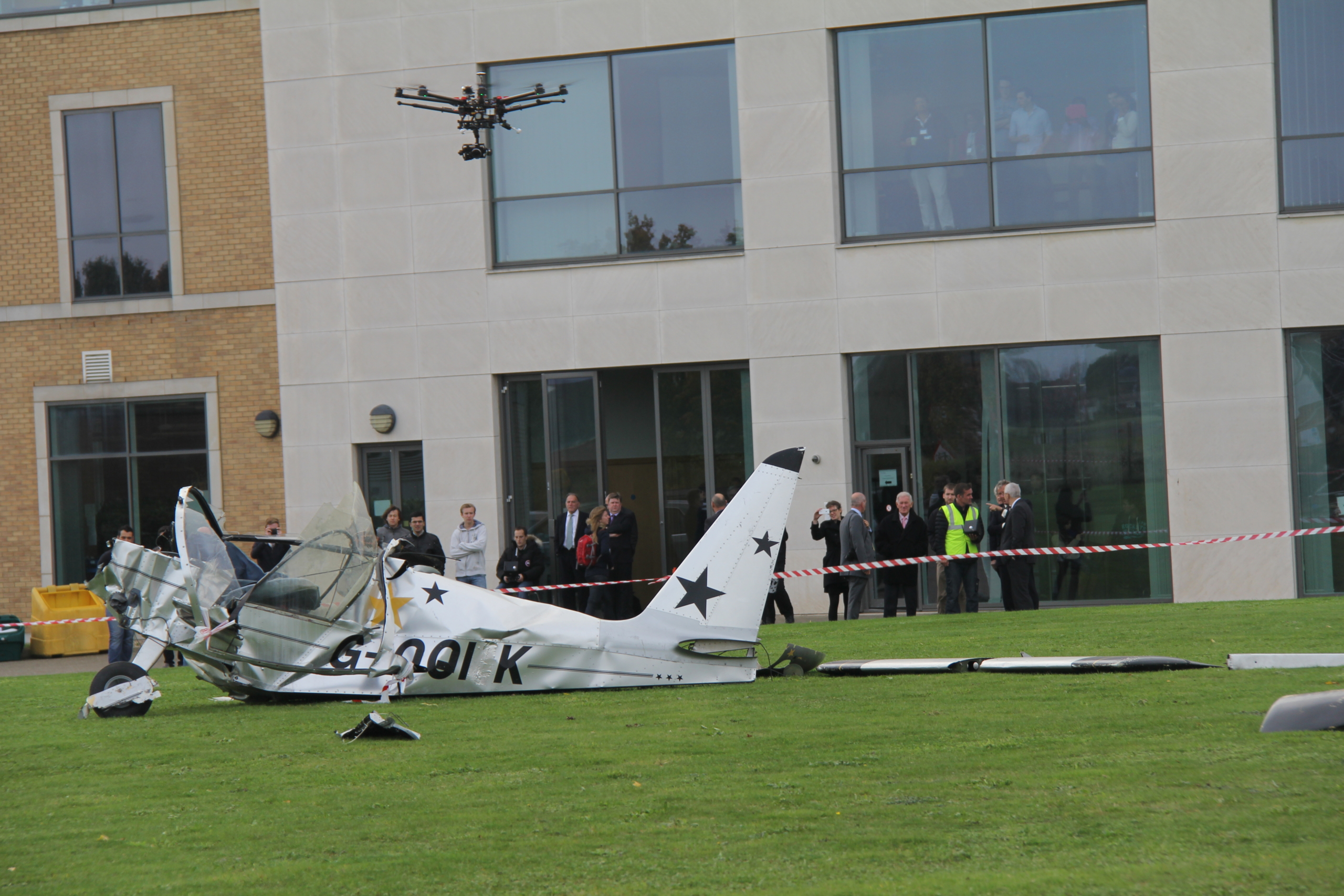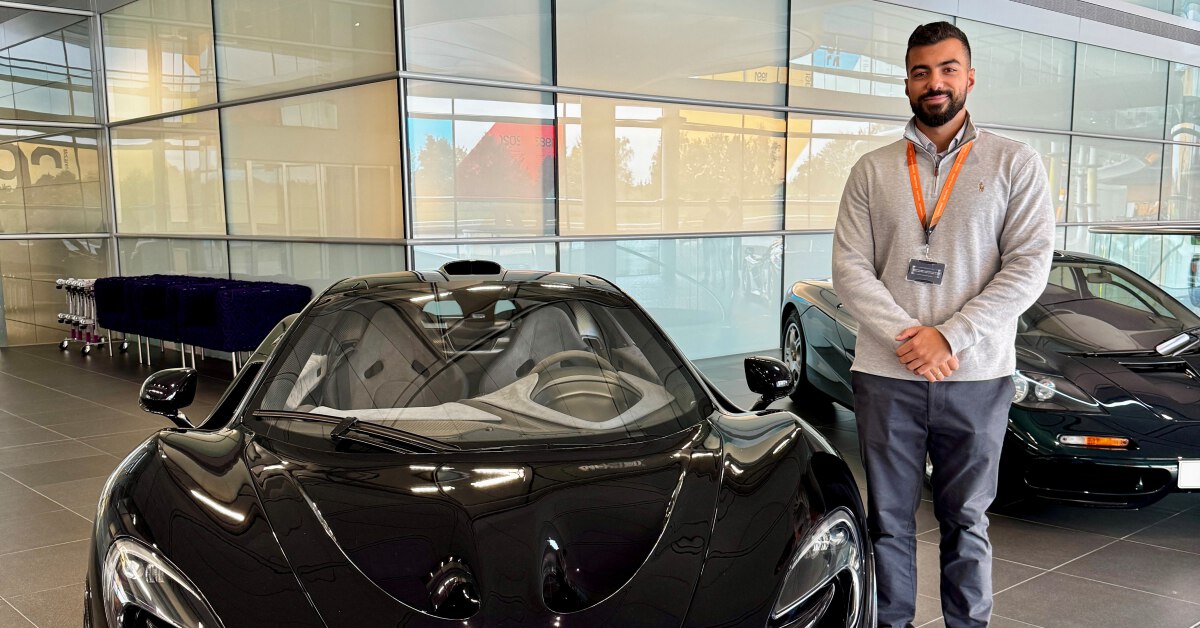‘Drones for Good’: Remotely Piloted Aircraft Systems (RPAS) helping investigators gather evidence and prevent future accidents
01/04/2016

Photo: DJI S1000 “Octocopter” Drone scans a demo accident site outside Martell House, Cranfield University
Accident sites are often dangerous or difficult places to work. There are always hazards that will require the accident investigator to expose themselves to risk. These take many forms – environmental, physical, material, biological, psychological – which will need to be addressed, as the investigator needs to collect as much evidence (particularly perishable evidence which might be washed away, blown away or destroyed) as quickly as possible.
During this initial risk assessment the RPAS cameras (video/stills/thermal/Infrared) are capturing this evidence. This imagery will then be used in real time to assist with communicating the situation to other agencies. This helps confirm the extent of the accident site or even control access, if required.
RPAS allows the investigator to conduct a dynamic risk assessment from a distance whilst also capturing the evidence required with video and stills. Previously helicopters or fixed wing aircraft might have been chartered to provide this service. This is expensive and not always practical.
Based upon the utility outlined above RPAS technology is currently being used by state level investigation agencies including UK Air Accidents Investigation Branch (AAIB) and the UK Rail Accident Investigation Branch (RAIB).
This technology is improving week by week, and some of the best results are being achieved with some of the smallest and most readily available systems.
A key point to the success of their deployment is that they are operated legally and safely by professionals who understand the airspace in which they might operate, but also the hazards present at the accident.
Cranfield University is leading the way in this field. At the Safety and Accident Investigation Centre we continue to test theories and push investigative/research boundaries on the accident site. Flying a range of drones, with a wide array of sensors, we aim to enhance current accident investigation techniques. But more than this we aim to revolutionise how evidence is gathered, analysed and then promulgated to the public and wider safety community.
An example of this is our work with 3D models. We are pioneering new 3D modelling techniques in order to provide accurate, measurable 3D models of accident sites (using the video and stills captured for evidence collection, then applying photogrammetry techniques to convert these images to 3 D models). These can then be used for investigative analysis, and as graphic representation in final accident reports.
This is a hugely exciting area of research, which utilises new and innovative drone technology and gives us an advantage when investigating serious accidents and incidents. Constantly looking to the future, our aim is to continue to be the centre of excellence with regard to this novel and innovative approach.
Categories & Tags:
Leave a comment on this post:
You might also like…
Preparing your work for Turnitin submission
Before submitting your work into Turnitin for similarity checking, if you have used referencing software then you may need to take some important steps first. Mendeley and Zotero integrate with MS Word by embedding field ...
The fast track to supercar engineering: My Cranfield journey
It’s been a dream come true to work on some of the world’s most prestigious supercars – the Aston Martin Valhalla, McLaren 750 & Artura, the GMA T.33. But every successful ...
Automotive Engineering: From student to hypercar innovation at Rimac
We sat down with recent graduate Thomas Perrin, to discuss how his year on the MSc in Automotive Engineering at Cranfield University propelled him from the lecture hall directly into the ...
What this year at Cranfield really meant to me
Every Cranfield journey is unique. In this alumni reflection, Zachea Scicluna shares what her year at Cranfield truly meant, from facing uncertainty to gaining hands-on experience in industry-backed projects. I’ve been reflecting (and delaying) ...
Preparing for assignments and exams?
Sorry! We know it seems a bit mean to mention the exams in January rather than looking forward to the break before it! However, we know many of you will be thinking about your forthcoming ...
Screening for FTSE 100 companies on Bloomberg
So you’re researching an index and need some data on its constituent companies? Bloomberg’s Equity Screening tool makes light work of this, not just for the FTSE, but for indices, exchanges and sectors worldwide. Type EQS ...







I would imagine that quadcopters are the drones of choice for use in these situations. What about fixed wing systems?